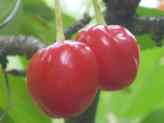Compost Ingredients
Mix and match for a balanced soil amendment and mulch
There are two main types of ingredients for a well balanced and fertile compost;
These are sometimes referred to as 'Greens' and 'Browns' which indicates whether they are fresh and soft materials, or dried and aged ones. Generally, they are classed this way to make it easier to decide on where to layer them. They should alternate through the pile.
Green materials would be things like fresh horse manure, kitchen scraps, lawn clippings and so on. Browns would be chopped fall leaves, straw, small twigs; another way of referring to them is either Nitrogenous (greens) or Carbonaceous (browns)
Ideally, you would start with a layer of brown materials, such as small chopped twigs or larger yard waste to make it easier for air to enter the pile from the bottom. Then there would be layers of green materials such as lawn clippings (a thin layer only to prevent clumping), chopped kitchen scraps; more brown materials such as shredded leaves, etc.
Eventually once all the layers are in place, the pile would be dented in at the center to collect moisture from rain fall, or a piece of plastic would be laid over top to collect the condensation from the pile as it evaporates.
Moisture control is an essential part of building your compost pile. Depending on the climate and weather patterns, which would be unique to your area, you would either need to add moisture, or allow it to escape.
How will you know if the moisture levels are adequate? The texture of the compost ingredients will resemble that of a wrung out sponge if there is enough moisture in them. Too much water, and the pile will smell sour.
Compost Ingredients at a glance;
Greens
|
Browns
|
What not to add to your compost pile;
|
|
Sign up for
Out in the O-Garden Newsletter
and get your five part composting E-course - FREE!
Join my
email
group and get tips, information and more monthly-ish.

New! Comments
Have your say about what you just read! Leave me a comment in the box below.